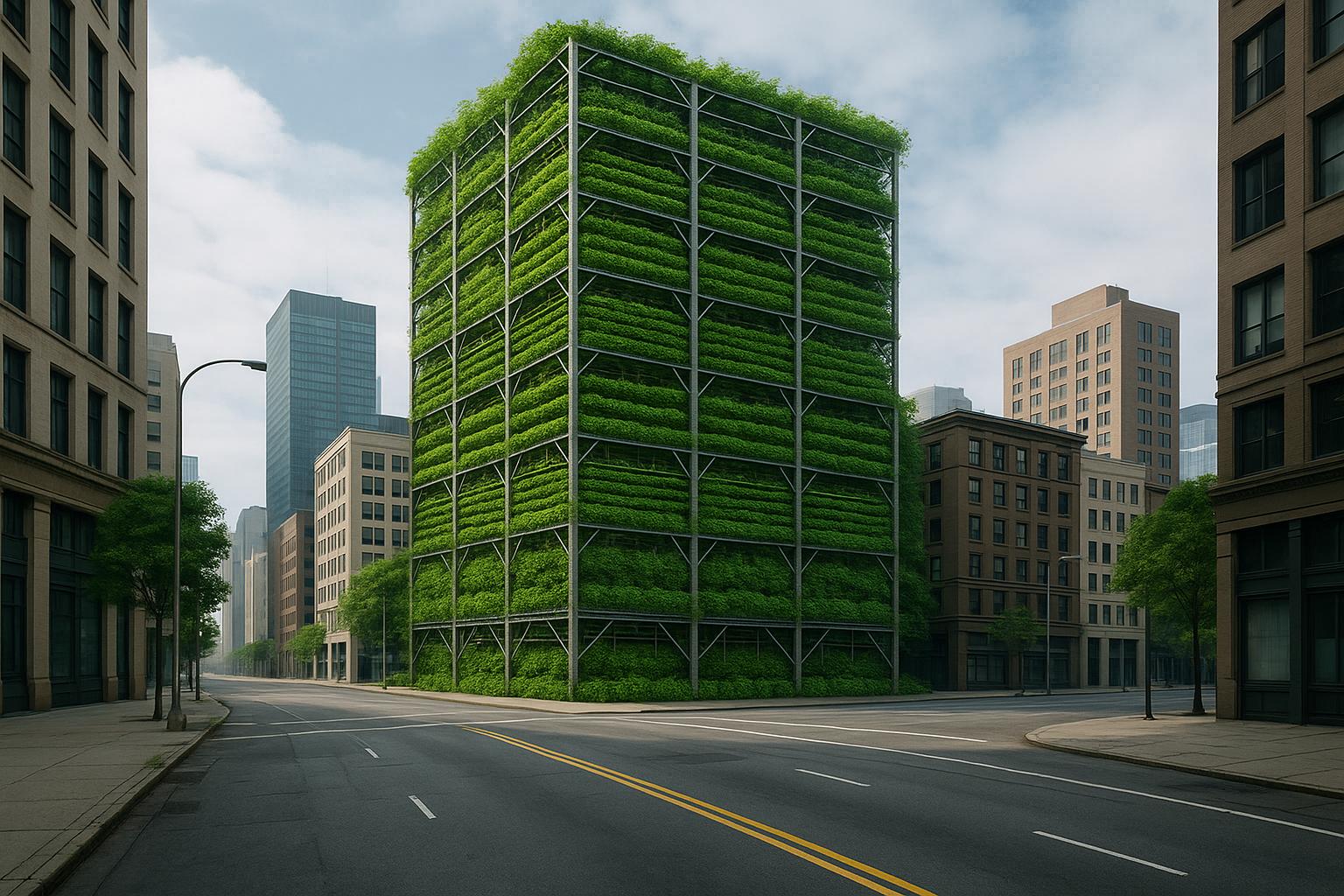In 1982, artist Agnes Denes created a striking conceptual artwork by planting 2.2 acres of wheat on a landfill site in New York’s Battery Park, near the then-new World Trade Center. Titled Wheatfield: A Confrontation, the installation starkly juxtaposed a golden wheat field against the urban backdrop of towering skyscrapers. Denes sought to highlight what she called a “powerful paradox”: the existence of hunger in one of the wealthiest cities in the world. This project was commissioned by the Public Art Fund and remains one of Denes’s most renowned works, widely regarded as prophetic for its early focus on ecological crises and the future of food production.
The global population, which was about 4.6 billion at the time of Denes’s project, has since risen dramatically and is projected to exceed 10 billion by 2050. This rapid population growth, combined with increasing urbanisation, where more than two-thirds of the world’s people will live in cities by mid-century, poses significant challenges for global food security. Already, food insecurity affects roughly 2.3 billion people worldwide, influenced by economic instability, climate change, and conflict. The COVID-19 pandemic and extreme weather events have further exposed the fragility of existing food systems, underscoring the urgent need for resilient, localised food production solutions.
Urban agriculture (UA) has gained attention as a potential part of the answer. This broad term covers a spectrum of farming practices within city environments, from high-tech vertical farming and soil-free techniques like hydroponics, aeroponics, and aquaponics, to grassroots initiatives such as guerrilla gardening on urban fringes. UA is not new: victory gardens supported rationing in the world wars, and during the 1970s and 80s, “green guerrilla” movements reclaimed hundreds of vacant lots for farming in Manhattan. The United Nations recognised urban farming as a key development tool in the 1990s, and the practice has proved vital even in extreme circumstances, such as mushroom farms cultivated in basements during the Syrian civil war’s siege of eastern Ghouta.
The pandemic briefly sparked a surge in urban farming investments, with £4.5 billion invested in vertical farming startups in 2021, driven by fears over disrupted food supply chains. However, many of these companies have since faltered post-lockdown, suggesting that the hype around urban agriculture might be waning. Nevertheless, authorities and innovators remain committed to the concept: for instance, Scotland recently opened a £1.8 million Vertical Farming Innovation Centre, while urban farms have taken root in unconventional settings worldwide, including shipping containers in Brooklyn, underground car parks in Paris, WWII bomb shelters in London, and rooftops across Asia. Currently, urban agriculture supplies between 5% and 10% of the world’s legumes, vegetables, and tubers.
Beyond production capacity, urban farming offers nutritional and environmental advantages. It could improve diets in wealthier countries and increase calorie availability in the global south, contributing to the UN’s sustainable development goals for hunger alleviation, sustainable cities, and responsible consumption. Local farming also reduces the carbon footprint linked to long supply chains and packaging. Research into food grown in London found it generated 2.23 kg less CO2 per kilogram than conventional agriculture. Additionally, soil-free methods such as vertical farming consume far less water, up to 98% less, according to the World Economic Forum, and can leverage urban waste resources, including treated human wastewater enriched with nitrogen and phosphorus.
Urban greening initiatives like rooftop farms can mitigate city heat island effects by cooling buildings. Perhaps most importantly, urban agriculture fosters food sovereignty, freeing communities from dependence on industrial agribusiness, which is particularly crucial in under-resourced regions. Gardening and farming also engage people deeply with natural processes, empowering individuals and communities alike.
However, urban agriculture is not without its challenges. Outdoor farming near roadways can introduce pollutants into food, and indoor growing, while high-yield, demands significant energy consumption. The scale necessary to feed billions solely through vertical farms would be unsustainable because of their energy requirements. A balanced, context-sensitive approach is needed: energy-intensive, soil-free indoor farms are suited to places like the Gulf states, with limited water but abundant renewable energy, while low-impact urban fringe agriculture fits regions with different resources.
Crucially, proponents advocate for agroecology, a holistic method guided by principles rather than strict practices. Agroecology emphasises responsiveness to local environments, soil health, biodiversity protection, and minimal external inputs. Such practices could transform neglected urban spaces into productive landscapes. An example is Edinburgh’s Lauriston Farm, a cooperative enterprise converting 100 acres of former pasture into a mix of market gardens, community allotments, agroforestry systems, orchards, and restored wetlands. It symbolises a quietly radical shift in urban-rural relationships, even if it cannot feed the entire city alone.
Globally, small-scale farmers already produce a significant proportion of the world's calories without relying on industrial practices. Integrating agroecological principles into city planning and policy could reshape urban food systems and foster a closer connection between people and nature, something that has declined sharply since the 1800s.
Urban agriculture is not a silver bullet capable of single-handedly feeding 10 billion people. Nonetheless, it must be part of a comprehensive strategy that includes reducing food waste, preserving soils, halting pollution, combating climate change, and protecting biodiversity. As writer Derek Jarman noted, expanding the boundaries of our food production, our “garden’s horizons”, broadens the range of what is possible. Small, diverse actions combined could yield profound changes in how we grow food and sustain life in the cities of the future.
David Farrier, who elaborates on these issues in his book Nature’s Genius: Evolution’s Lessons for a Changing Planet, reflects a growing consensus that urban farming, supported by both technology and ecological wisdom, holds promise to complement global food systems.
📌 Reference Map:
- [1] (The Guardian) - Paragraphs 1, 3-12, 14-15
- [2] (Wikipedia) - Paragraph 1
- [3] (WHO) - Paragraph 2
- [4] (Our World in Data) - Paragraph 2
- [5] (UN Report) - Paragraph 3
- [6] (Reuters) - Paragraph 4
- [7] (The Guardian) - Paragraphs 3-12, 14-15
Source: Noah Wire Services
